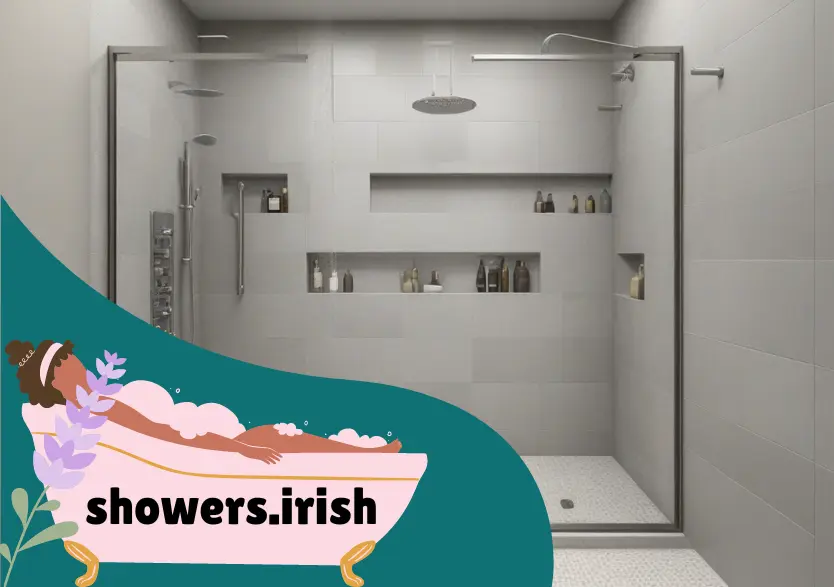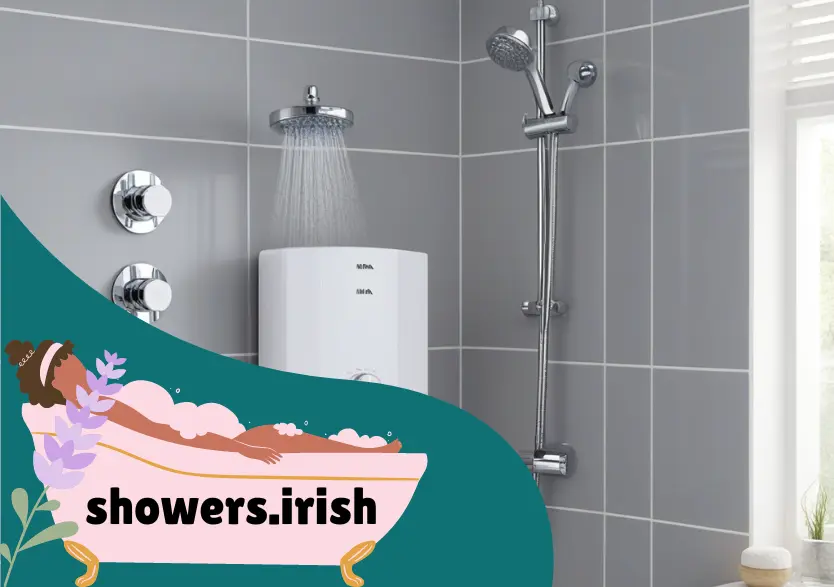Upgrading or installing a new shower can transform your bathroom into a luxurious retreat. Whether you’re a DIY enthusiast or a homeowner looking to refresh your bathroom, this comprehensive guide will walk you through the entire process of installing shower walls, grouting them, and fitting a Mira electric shower. With clear instructions and practical tips, you’ll be equipped to tackle this project confidently.
Preparing for Installation
Before diving into the installation process, proper preparation is crucial. This section covers the essential steps to set you up for success.

Assessing the Bathroom Space
Evaluate the Existing Setup: Examine your current bathroom layout. Measure the dimensions of the shower area, noting any existing fixtures or plumbing that might affect your installation.
Plan Your Layout: Decide on the type of shower walls you want, such as tiles, acrylic panels, or glass. Consider the placement of the Mira electric shower unit and how it will fit with your chosen wall materials.
Gathering Tools and Materials
Essential Tools: For installing shower walls and grouting, you’ll need tools like a tape measure, level, utility knife, drill, and grout float.
Materials Required: Purchase shower wall panels or tiles, grout, a Mira electric shower unit, adhesive, and sealant. Make sure to choose high-quality materials to ensure durability and performance.
Preparing the Shower Area
Remove Old Fixtures: If you’re replacing an old shower, carefully remove the existing shower walls, fixtures, and any old grout. This step is vital for a clean slate and proper installation.
Surface Preparation: Clean the wall surfaces thoroughly and ensure they’re dry. Repair any damage or imperfections in the wall to create a smooth base for the new shower walls.
Installing Shower Walls
With your space prepared and materials on hand, it’s time to install the shower walls. This section provides detailed instructions for different types of shower walls.

Installing Tile Shower Walls
1. Prepare the Walls: Ensure the wall surface is clean, dry, and level. Apply a waterproofing membrane if necessary to prevent moisture damage.
2. Apply Adhesive: Use a notched trowel to spread thin-set mortar on the wall. Start at the bottom and work your way up.
3. Place the Tiles: Begin laying the tiles from the center of the wall to ensure an even pattern. Press each tile into the adhesive and use spacers to maintain consistent gaps.
4. Cut Tiles as Needed: Use a tile cutter to trim tiles to fit around corners and edges.
Installing Acrylic Panels
1. Measure and Cut Panels: Measure the shower area and cut the acrylic panels to fit using a utility knife.
2. Apply Adhesive: Apply a bead of adhesive to the wall, then press the panels into place.
3. Seal Joints: Use a silicone sealant to seal around the edges and joints to prevent water leakage.
Installing Glass Shower Panels
1. Assemble the Frame: If your glass panels come with a frame, assemble it according to the manufacturer’s instructions.
2. Install the Panels: Secure the glass panels into the frame and attach them to the wall using appropriate hardware.
3. Seal the Edges: Apply silicone sealant around the edges to ensure a watertight seal.
Grouting the Shower Walls
Grouting is an essential step that completes the look of your shower walls and ensures they are water-resistant.
Choosing the Right Grout
1. Select Grout Type: Choose between sanded or unsanded grout based on the width of your tile joints. Sanded grout is ideal for wider joints, while unsanded grout works for narrower gaps.
2. Color Matching: Select a grout color that complements your tiles and bathroom decor.
Applying the Grout
1. Mix the Grout: Follow the manufacturer’s instructions to mix the grout to a creamy consistency.
2. Apply the Grout: Use a grout float to spread the grout over the tiles, pressing it into the joints. Work in small sections to avoid the grout drying out before you finish.
3. Clean Excess Grout: After applying, use a damp sponge to wipe off excess grout from the tile surfaces, being careful not to remove grout from the joints.
Sealing the Grout
1. Allow Grout to Dry: Let the grout cure for the recommended time, usually 24 to 48 hours.
2. Apply Grout Sealer: Use a grout sealer to protect the grout from stains and moisture. Apply according to the manufacturer’s instructions.
Installing a Mira Electric Shower
Installing a Mira electric shower requires careful attention to plumbing and electrical connections. Follow these steps to ensure a successful installation.

Preparing for Installation
1. Check Water Supply: Ensure your water supply is adequate and the pressure is suitable for the Mira electric shower model you’ve chosen.
2. Electrical Requirements: Verify that your electrical supply meets the requirements for the Mira electric shower. You may need to hire a qualified electrician for the electrical connections.
Installing the Shower Unit
1. Mount the Shower: Secure the Mira electric shower unit to the wall using the supplied brackets. Ensure it is level and properly aligned.
2. Connect the Water Supply: Attach the water inlet and outlet pipes to the shower unit. Use appropriate fittings and check for leaks.
3. Connect the Electrical Supply: Follow the manufacturer’s instructions to connect the electrical wiring. Ensure all connections are secure and properly insulated.
Testing the Shower
1. Check for Leaks: Turn on the water supply and check for any leaks around the connections.
2. Test the Electrical System: Ensure the shower is operating correctly by testing all functions and adjusting settings as needed.
3. Final Adjustments: Make any necessary adjustments to the water temperature and flow settings.
Conclusion
Installing shower walls, grouting, and fitting a Mira electric shower can significantly enhance your bathroom’s functionality and appearance. By following this comprehensive guide, you can achieve a professional-quality installation that you’ll enjoy for years to come.
For those eager to dive deeper into bathroom renovation or seeking more home improvement tips, explore additional resources and guides. Don’t hesitate to share your installation experiences or ask questions—your feedback is valuable!
Frequently Asked Questions (FAQs)
1. What type of adhesive should I use for installing tile shower walls?
For installing tile shower walls, use a thin-set mortar adhesive, which is specifically designed for wet areas. Ensure the adhesive is suitable for the type of tiles you’re using, and follow the manufacturer’s instructions for application.
2. How long should I wait before using the shower after grouting?
It’s essential to let the grout cure for at least 24 to 48 hours before using the shower. This waiting period allows the grout to fully set and ensures a durable, water-resistant finish. Be sure to follow the grout manufacturer’s recommendations for curing times.
3. Can I install acrylic shower panels over existing tiles?
Yes, you can install acrylic shower panels over existing tiles as long as the surface is clean, dry, and level. However, it’s crucial to apply a suitable adhesive and ensure there are no gaps or loose tiles that could affect the installation.
4. Do I need a professional electrician to install a Mira electric shower?
Yes, it’s recommended to hire a qualified electrician to install a Mira electric shower, as it involves electrical connections that must meet safety standards. An electrician can ensure proper installation and compliance with local electrical codes.
5. How often should I seal the grout in my shower?
Grout should be resealed every 6 to 12 months, depending on the level of use and exposure to moisture. Regular sealing helps protect the grout from stains and water damage, prolonging its lifespan and maintaining the appearance of your shower walls.
If you’re considering a complete bathroom upgrade, you might want to explore adding a steam shower or installing a wet room shower tray. Steam showers offer a luxurious spa experience, combining the benefits of a traditional shower with the relaxation of a steam room. Meanwhile, wet room shower trays provide a modern, sleek look and are ideal for creating a barrier-free shower space. Both options can significantly enhance your bathroom’s functionality and aesthetic.
For a detailed guide on how to install a steam shower or a wet room shower tray, check out this helpful post: How to Install a Steam Shower and Wet Room Shower Tray. This resource offers step-by-step instructions and tips to ensure a successful installation. Whether you’re upgrading your current setup or planning a new project, this guide will provide valuable insights to achieve a professional finish.
Credit Website: www.ireland.ie/
